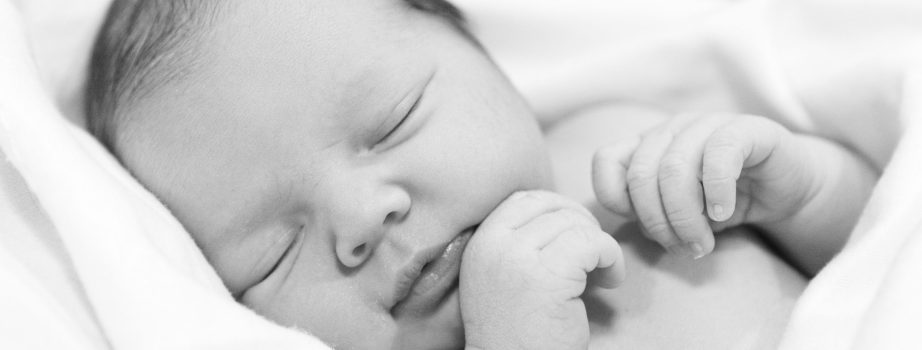We sat around a circle in a colorful nursery school classroom. Our babies in front of us, propped up on pillows. Sonya was only three months old at the time. My breasts throbbed in pain as I had plugged ducts once again – but this was not a breastfeeding support group — as desperately as I wished it were. I can’t help but find the humor in that I just wished I were with a group of strangers talking about my breasts!
No, this was “group therapy” for new parents of babies with various degrees of hearing loss.
“Hi, I’m Missy,” I said, louder than intended. “This is my daughter Sonya. She is three months old. She is profoundly deaf.”
Profoundly deaf. How silly I was. As if the term deaf didn’t already imply profound hearing loss, but I was new to this.
As a new mom to a child with hearing loss, I struggled to describe my child’s condition. While my immediate family knew, Yan and I had yet to tell any friends or distant relatives. My greatest anxiety at the time was how do I tell people Sonya is deaf when I had trouble saying the word “deaf” without falling to pieces?

We decided to tell people one-by-one, or not at all. This was emotionally very taxing. I didn’t feel it was something I could say by phone, so we just waited until an in-person meeting naturally arose, and then tried to play it casual (which in retrospect, was very very awkward.)
“Yeah, so Sonya is actually deaf.” I told my good friend who had come over for brunch.
“Oh,” she said. Her face expressionless.
“Yeah, we were really shocked. But we are looking into her getting cochlear implants, which are really amazing.” My eyes filled with tears but I grinned through it.
“Yeah – she won’t even be deaf then.”
The conversation moved on. And I was devastated by how cavalier my friend’s response was to our situation. But the fact was, I had put her on the spot. She had no idea how to react (how could she?) In another instance, we had the opposite reaction.
“Sonya can’t hear.” Yan told his friend. “She has a genetic mutation. It’s pretty interesting actually, she will probably get cochlear implants.”
“I’m so sorry. I just can’t get over the irony,” his friend replied. “Two people who love music so much….”
It was kinda like he had twisted the knife. But we just smiled politely and moved on.
Now, these were just a couple terrible responses. We also received many very kind and warm and empathetic words of support, which I hold dear to this day. I wanted to relay the above experiences because a friend of mine took the opposite approach when informing friends of her child’s hearing loss.
She simply sent a mass email.
Her email was short, optimistic, honest and explicit. She didn’t delve into her heartache or fear, but she she also didn’t pretend all was hunky dory. Rather, she let her friends and family know that while her child is doing very well and is a great joy to their lives, they were born with profound hearing loss.
I think sending an email is wonderful solution. I came up with the below template in case it is helpful for parents out there.
Dear family and friends.
Sonya is a very special baby, and the birth announcement can’t possibly say it all. We feel so lucky and blessed to be her parents. Sonya was born with profound hearing loss. We want to give you time to adjust to the news so you won’t feel the need to have an immediate response. We would love for you to meet her. She is intelligent, beautiful, bubbly and full of curiosity. We are very optimistic for her future as she is a likely recipient for cochlear implants, which will afford her the ability to hear most everything. We are still gathering information, but will keep you apprised. Please don’t hesitate to reach out.
Love, Missy and Yan
And for those out there receiving the news that your friend’s child has hearing loss, here are some tips on what to say and what not to say:
What Not to Say
“I’m sorry” Any statement that contains pity was not pleasant to receive and didn’t convey the feelings I had about my child at all. I felt blessed from the moment Sonya was born.
“It could be worse” statements felt like the challenges we were only starting to understand were being minimized.
“I think this happened to you because you can handle it.” or “God gives special children special parents.” Implies that my child’s situation is so awful only I would love and care for her. Also, trying to explain to a parent why God did something is rarely helpful.
What to Say
I think congratulating the new parents is the most important thing you can say – because they deserve to be congratulated.
Offer to help. If you know of someone who has cochlear implants already, offer to connect them. We were taking Sonya to multiple appointments a day for months after her birth – so meals, offering to babysit, etc. are great ways to respond.
“She looks just like you.” I loved it when people complimented Sonya’s looks or behavior. Still do 🙂
Acknowledge the grief the parents are feeling. “I know I can’t take the pain away, but I wish I could.” Or, “There will be challenges but the love and joy will be so intense you will not be able to imagine your life without this little girl!”
Do you have other ideas on how to discuss hearing loss that worked for you? I would love to hear about them!

































